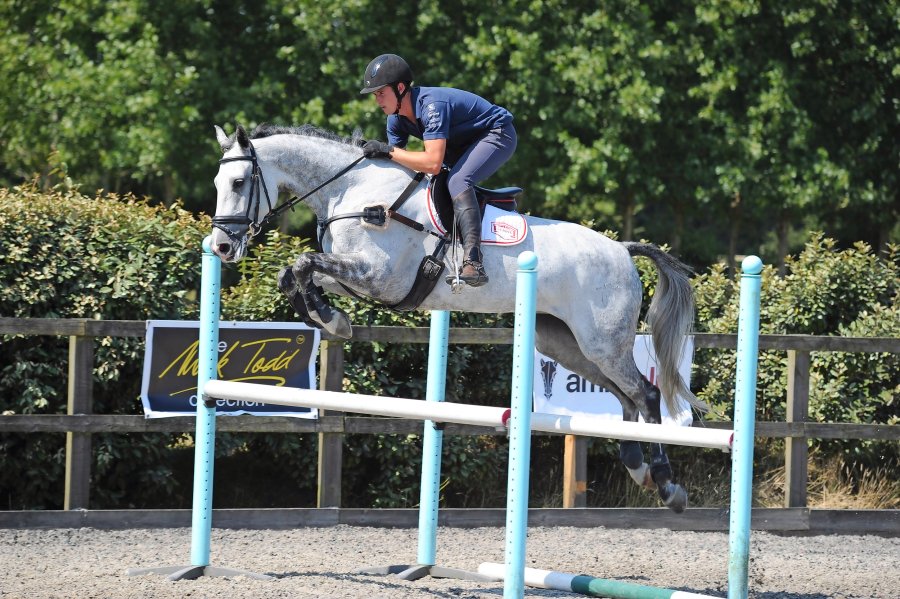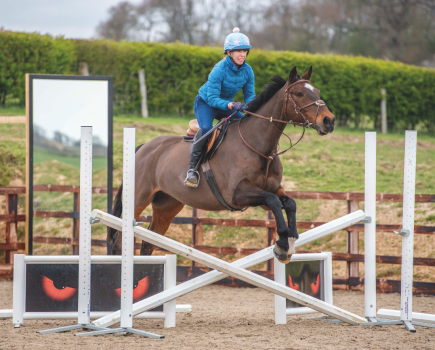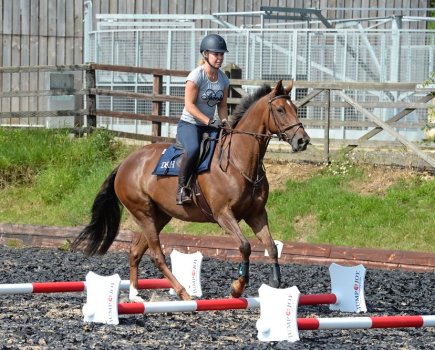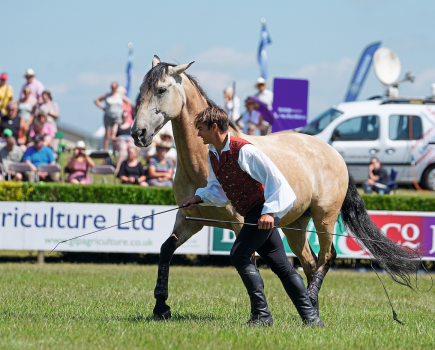Six-time Olympian Mary King is a huge advocate of gridwork. Grids are not only beneficial for strengthening your horse’s back muscles. They also help them learn to judge distances between fences and boost their elasticity, as they concentrate on clearing the poles and getting their stride length right.
You can adjust the difficulty of each grid exercise depending on your horse’s age, experience and ability to understand the pattern at its most basic set-up.
In the following exercises, there are there grid diagrams from easy to more advanced.
Have someone on the ground to help you adjust the fences and always warm up evenly on both reins in walk, trot and canter.
Exercise 1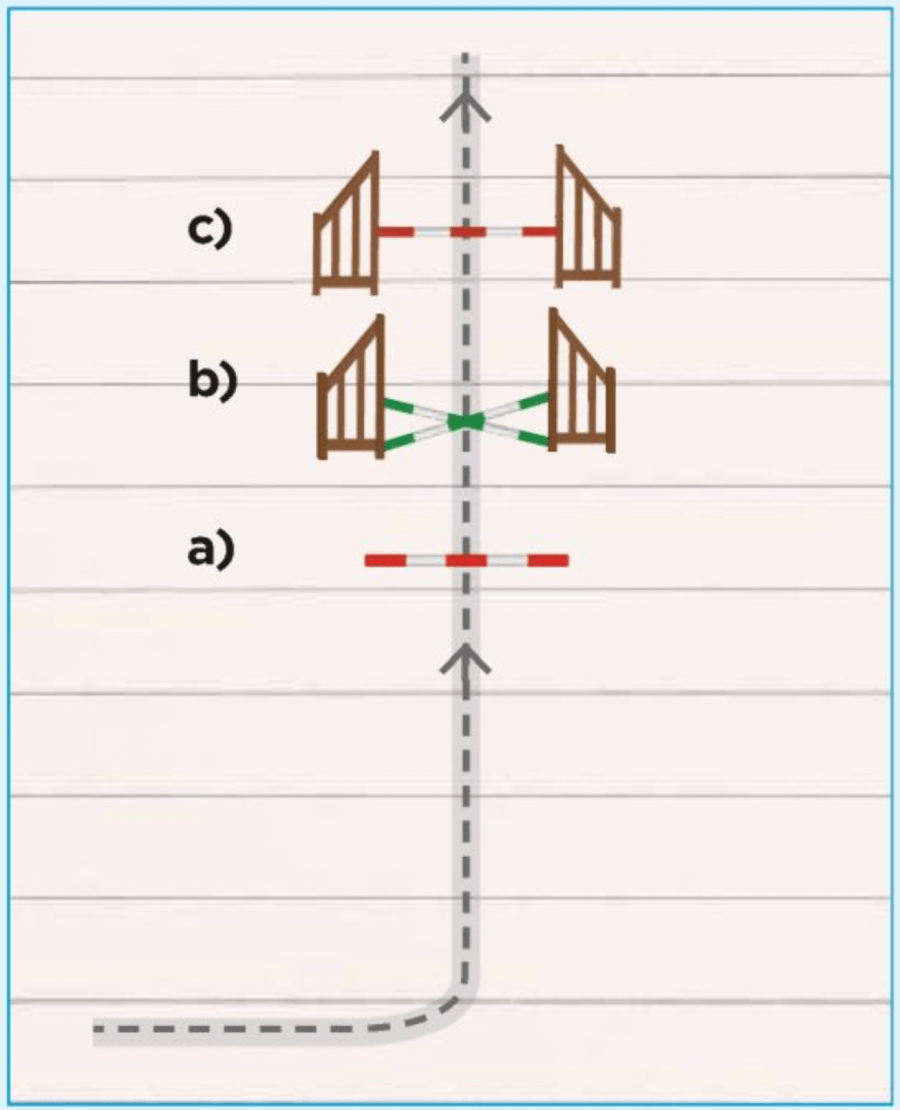
Time: 5 minutes
This is the grid pattern at its simplest, so your horse starts to learn and builds confidence. Set it up as shown below with a ground pole (a), cross-pole (b) and then a vertical (c). There should be a one-stride distance in between each fence.
How to ride it
- In an active trot with plenty of forwardness, ride towards the centre of the ground pole.
- Ride straight to the cross-pole and then the vertical, keeping your horse in the centre of each fence.
- Repeat on the other rein.
If your horse has a tendency to rush, you could add another ground pole halfway between the cross-pole and the vertical.
To progress, gradually increase the size of the vertical.
Exercise 2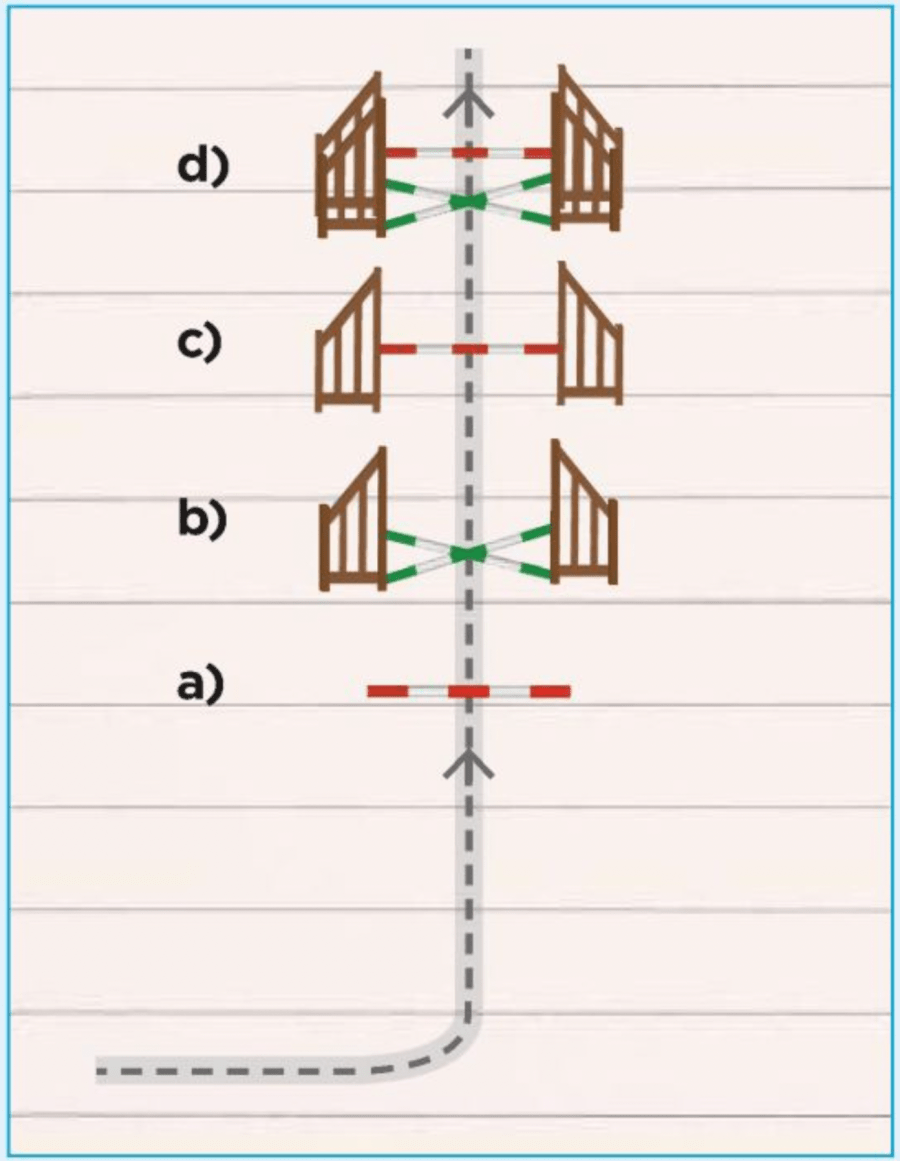
Time: 10 minutes
This time, you’re making the grid pattern in exercise one slightly more difficult by adding an over at the end (d). So now you have three fences in a row, plus the initial ground pole, each on the same one-stride distance.
How to ride it
- In an energetic canter (think impulsion rather than speed), look ahead so that you turn onto a line that takes you straight down the centre of the grid. Your horse needs to be clearing the centre of every jump.
- Repeat the exercise on the other rein.
- When you’re doing it confidently, turn the vertical (c) into an oxer too.
This grid is useful for keeping a straight line and maintaining energy in the canter. Slowly increase the height of the jumps using fillers as your horse progresses.
Top tip
Mary likes to give her horse regular breathers during a schooling session so he stays relaxed. It’s vital not to rush gridwork – only move on to the next phase when your horse is confident with what they are doing already.
Exercise 3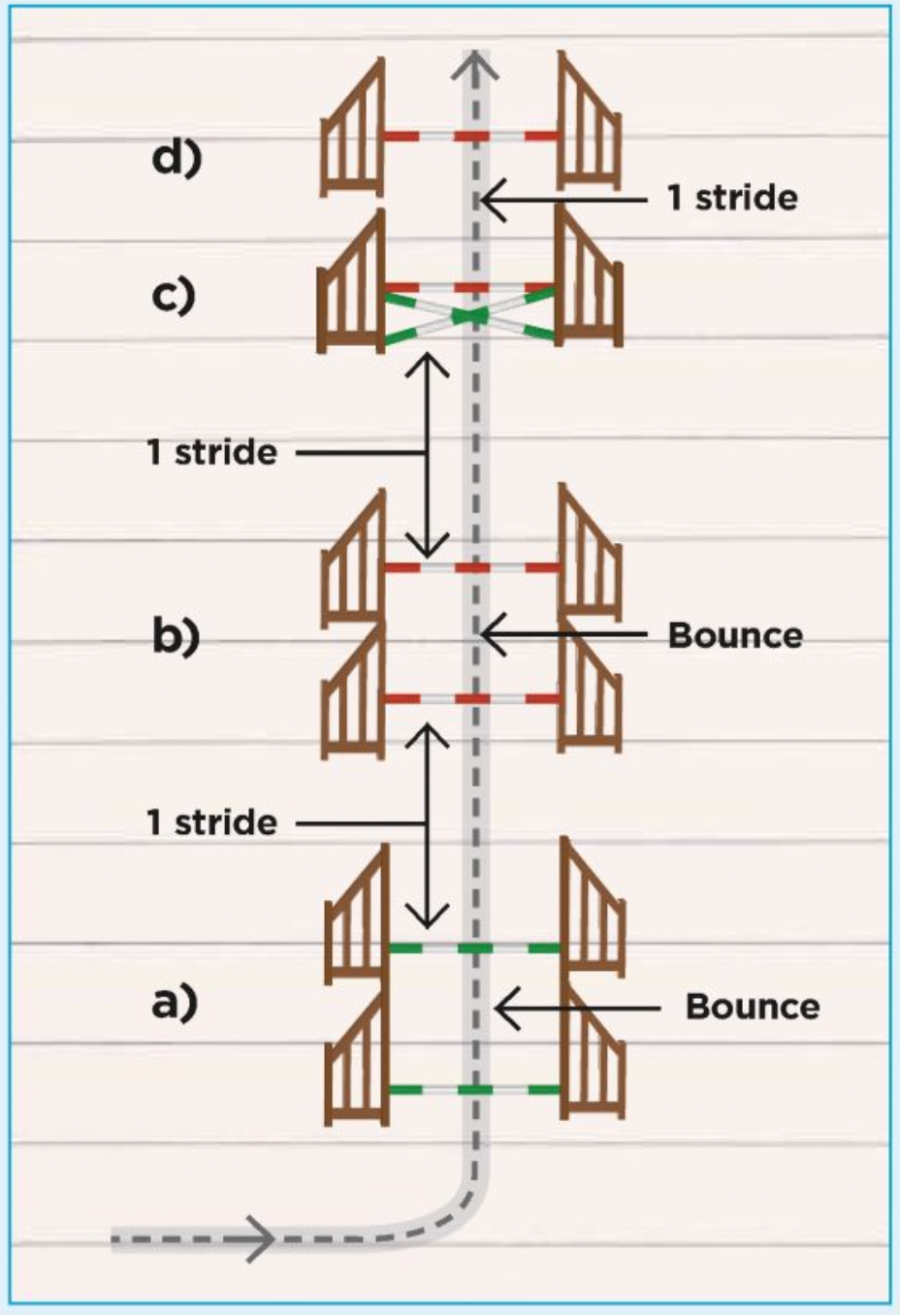
Time: 15 minutes
This is an advanced grid involving two bounces. It’s made up of two verticals (a) at 70cm (or smaller) on a bounce distance, followed by a second bounce (b) at 90cm maximum. Next there’s an oxer (c) and a vertical (d) on a one-stride distance.
- Establish a canter that’s energetic, yet controlled and collected, and turn to the first bounce.
- Aim for the centre and keep your hands low and soft through the bounce, allowing your horse to go forwards, while remaining straight.
- Take a breather and walk your horse around the school on a loose rein.
- Repeat the exercise, then take another breather before doing the exercise on the other rein.
Make sure your horse is happy jumping a bounce before you tackle this grid, and don’t jump it straight through. Instead, set it up fence by fence, only adding another fence after he has comfortably jumped what is there.
To progress, make the oxer wider to shorten the distance and make the grid a stronger test. A wider fence will make your horse slow down and push off their hocks to get up in the air more.
Meet the expert: Mary King MBE has represented Great Britain at six Olympic Games, winning team silver in 2004 and 2012, and team bronze in 2008. She has also won medals at World Championships and has multiple CCI5* titles to her name, including Burghley, Kentucky and two Badmintons.
Please note: Mary King is not pictured riding

